
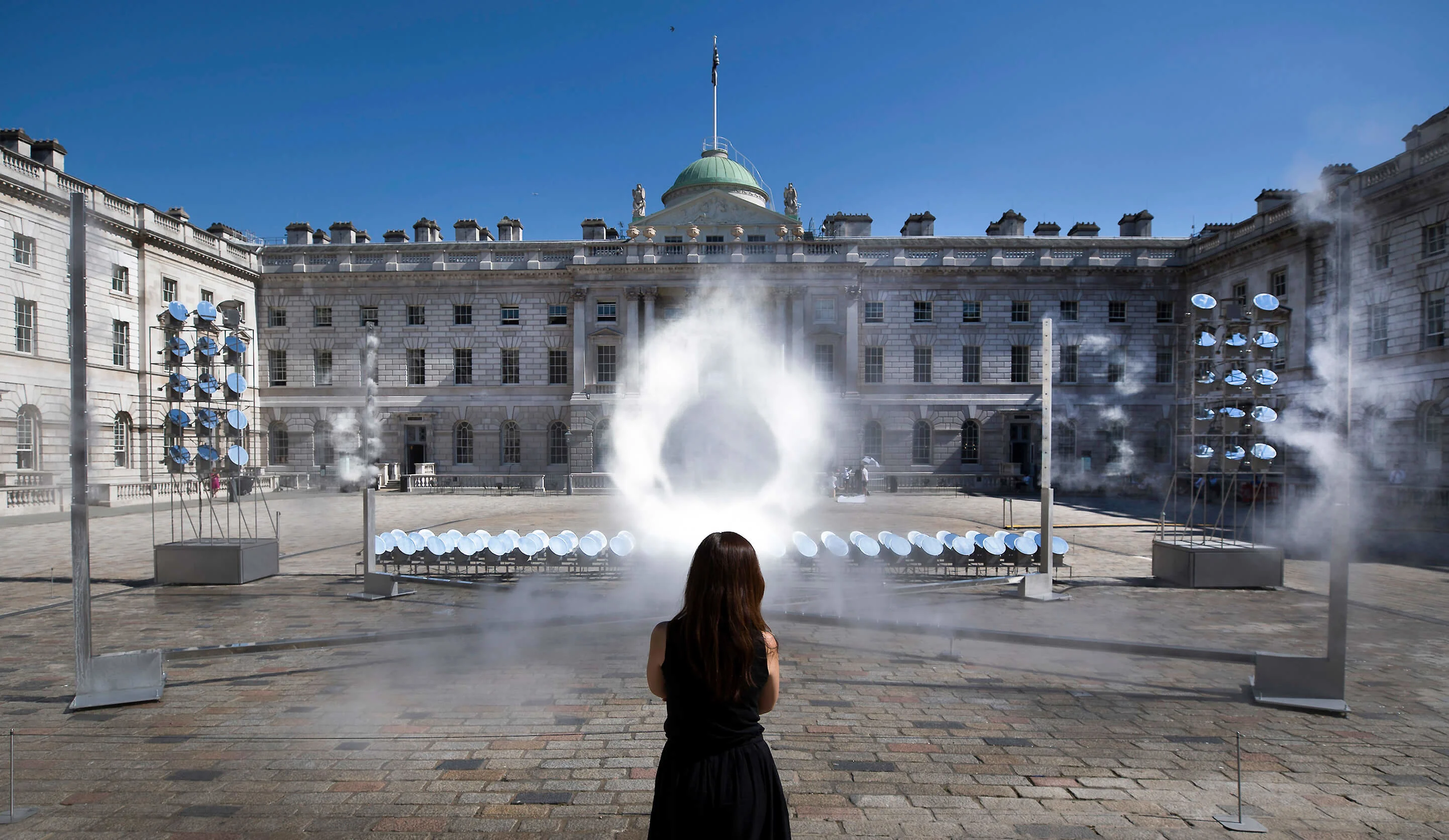
Somerset House is a grand stone building sat right on the River Thames in London. In the summer of 2018, experimental art duo Kimchi and Chips took over its courtyard with Halo, made up of 99 robotic mirrors which tilt and turn throughout the day to follow the sun’s movement like sunflowers.
The motorized mirrors were programmed to reflect beams of sunlight onto a cloud of mist, so when they aligned, they created a halo of light in the air. It only appeared momentarily when the sun, the wind and the water coincide in the right way.
This unpredictability drew people in, who stood around patiently, watching and waiting for the elusive perfect circle to form, the light hiss of the water jets in the background.
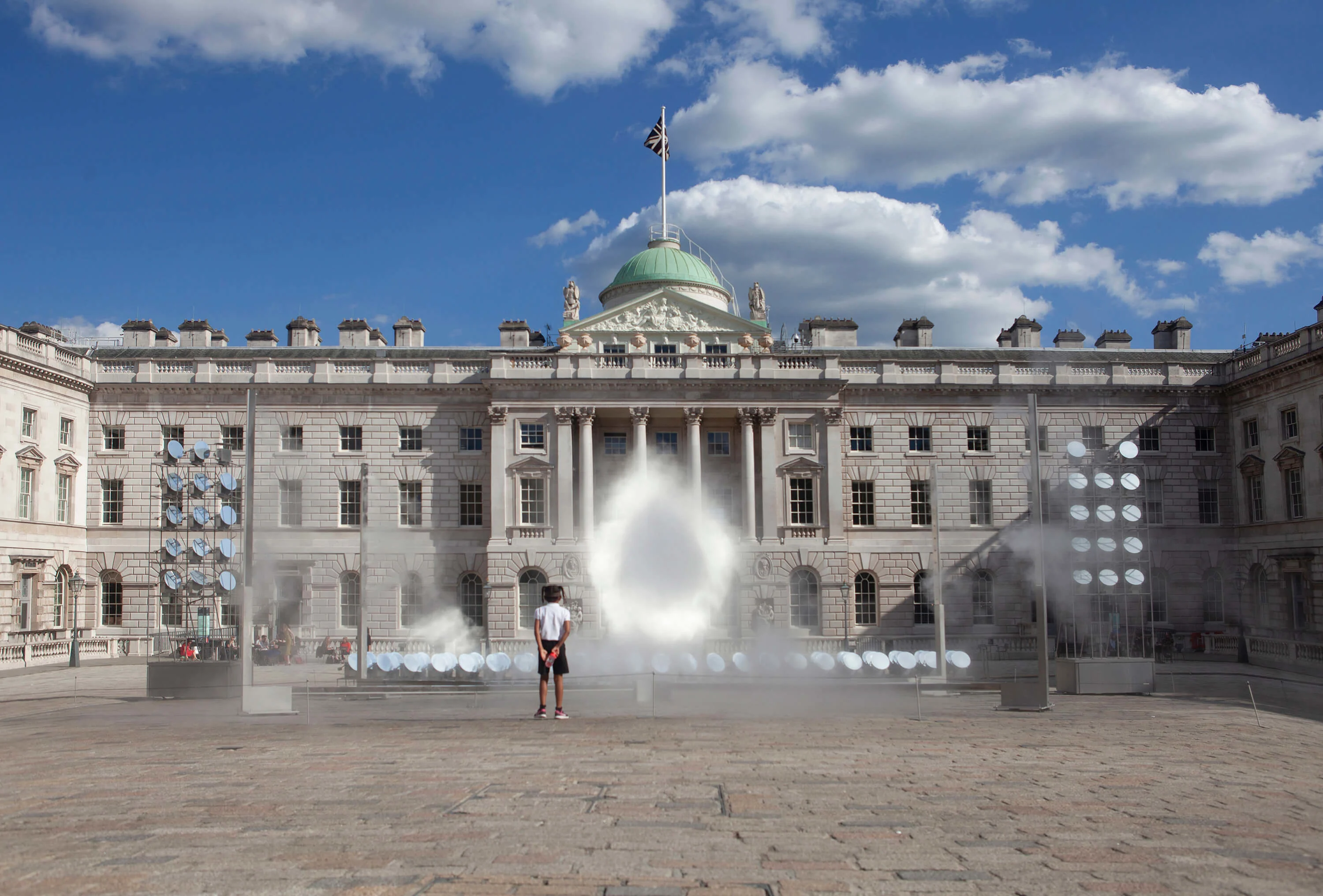
Mimi saw the work I was presenting and told me it was superficial.
This collaboration between technology and nature is characteristic of Kimchi and Chips, a South Korea-based studio made up of Mimi Son from Seoul and Elliot Woods from Manchester.
They first met at a design conference in Denmark. “Mimi saw the work I was presenting and told me it was superficial," Elliot remembers. "I think she maybe meant it as a mistranslated compliment, but I was hooked on the idea of identifying the other layers of the work.” They started working together in 2009.
Kimchi and Chips are interested in using technology to manipulate physical space to make something new and wonderful. “If we can give people encounters which contradict what they expect from reality, then it may help them to rebuild their own way of looking at the world on the most fundamental levels,” Elliot says.

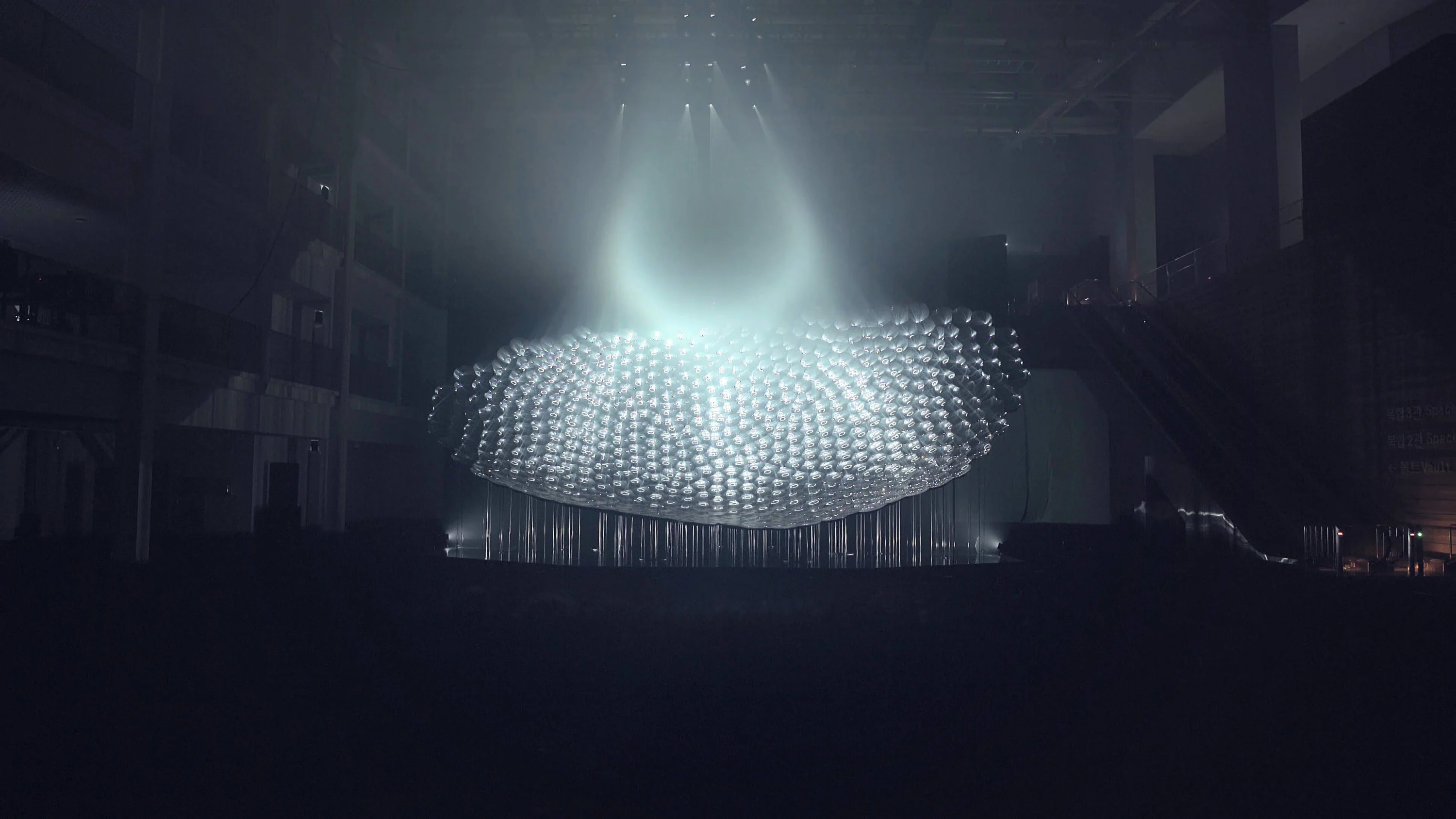
The duo often use light to create images in midair, as seen in their Drawing in the Air series. In the first piece, 2013’s Line Segments Space, influenced by Gego’s Reticulárea, projected light moves across a web of sharp 3D shapes, making a dancing pattern in the dark gallery space.
From directly projecting light beams onto physical material, they moved to reflecting light with concave mirrors onto haze in Light Barrier, making animated shapes appear out of thin air.
Halo was the first time the duo went outdoors to use sunlight, and it opened them up to several factors they couldn't control. That made the project more challenging, but it also brought with it some pleasant surprises.
“When we tested the mist generators in the Somerset House courtyard, we were amazed by their beautiful and meditative white noise,” Mimi says. “I also realized people are a very important and fundamental entity in the piece – just like the wind, sun and mist. One of the components of the work is the presence and anticipation of the audience."
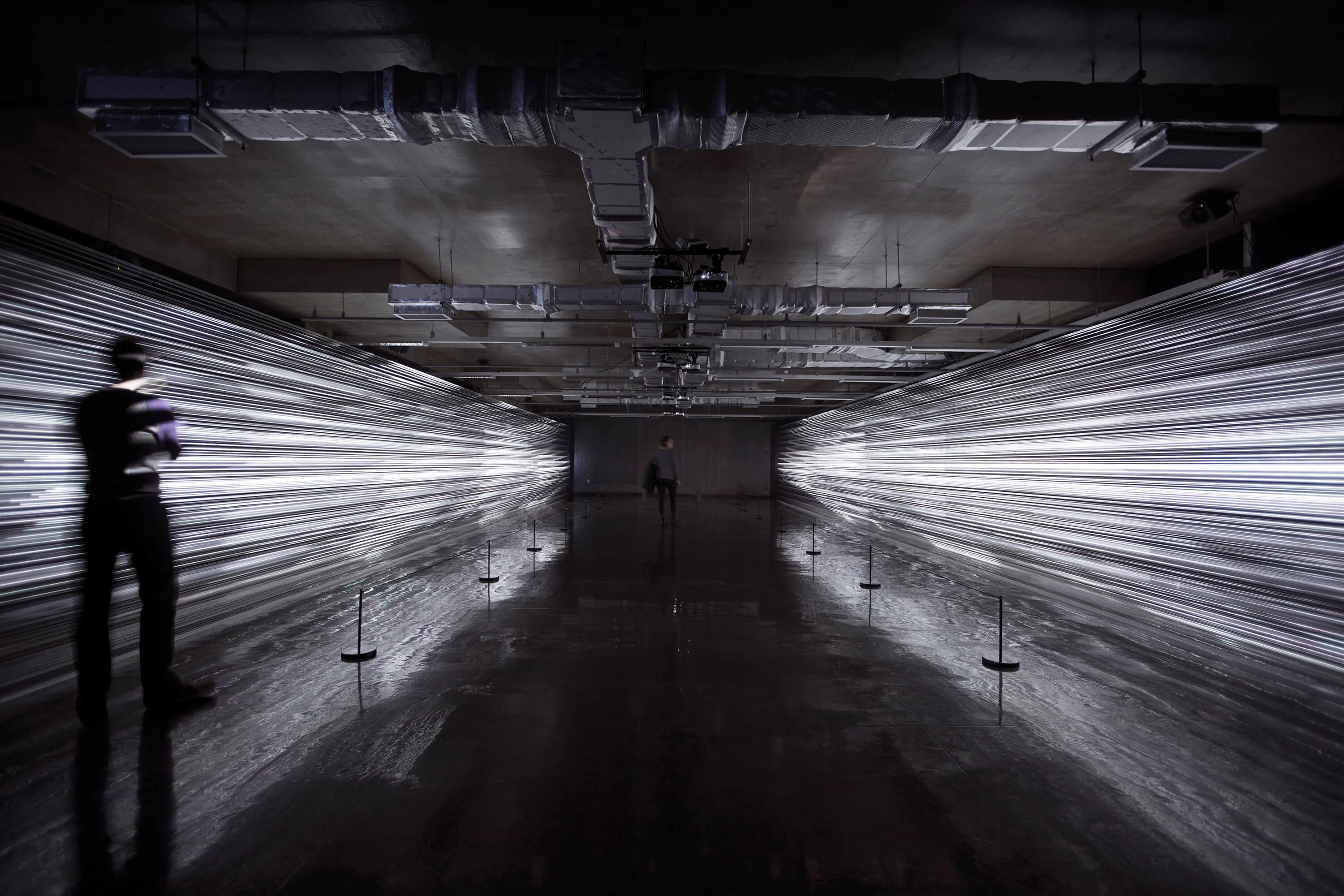
Some creative collaborators talk of becoming one mind, finishing each other’s sentences and knowing exactly what the other person is thinking. Kimchi and Chips, not so much.
“Creating artwork with Elliot is like learning how to agree on the fact that we all can disagree with each other,” Mimi says. They find common ground during the creation of the work itself, when unexpected overlaps between their two perspectives arise. They both like how this pushes them beyond what either artist would be capable of on their own.
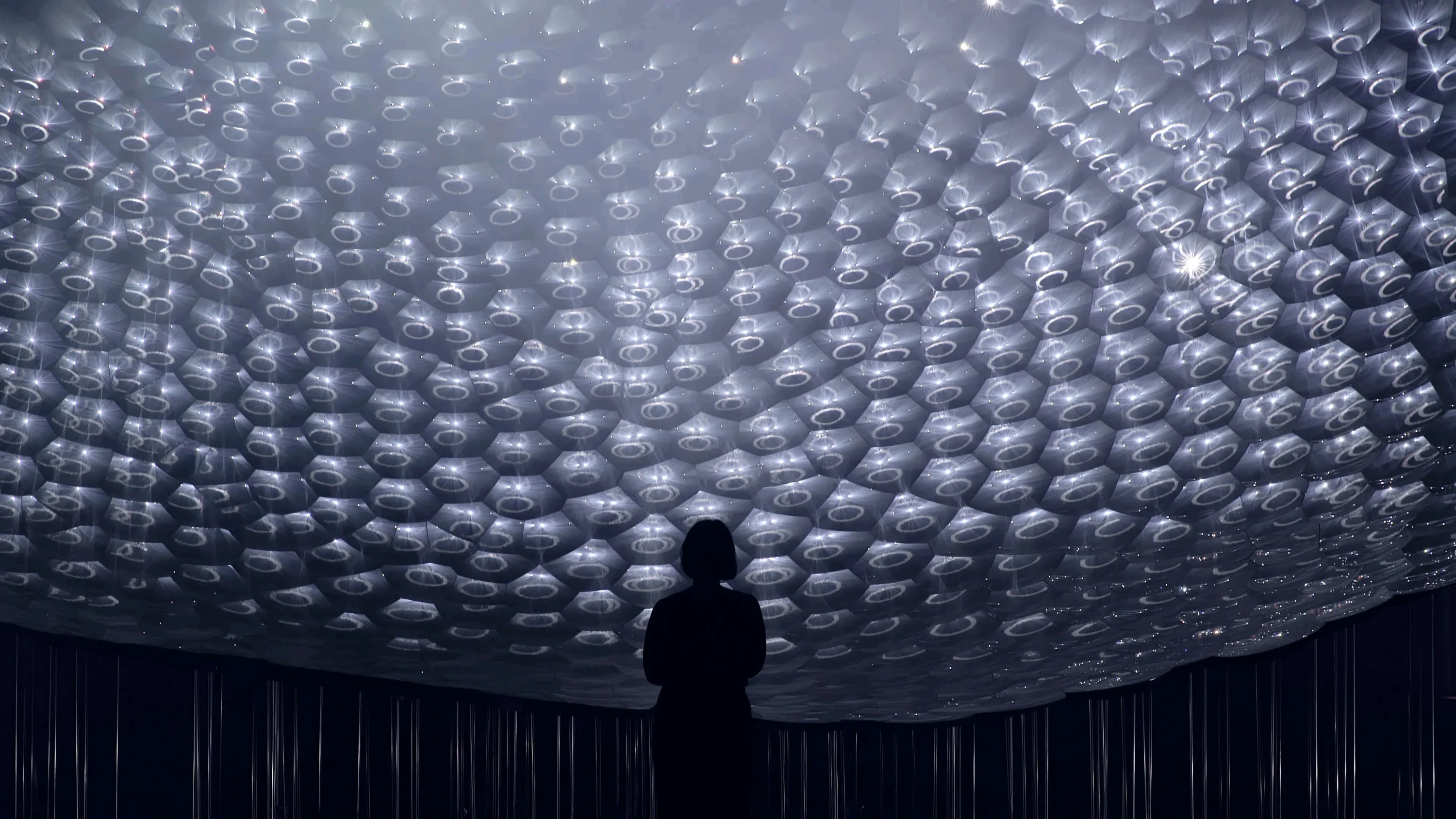
Their process is iterative and intense and begins with researching relevant theories, consulting with experts for advice and building a string of simulations, prototypes and mock-ups. It involves experimenting, arguing, taking a walk and starting over.
“Ultimately the artwork is a system,” Elliot says, “and that system will have an implicit personality which drives the aesthetic of the result. We want to get to that personality as quickly as possible.”
But even though the work is so carefully thought through, Kimchi and Chips are also comfortable with the fact that they can't control how people perceive their work. "I never considered what it needs to be," Mimi says. "Just like I am enjoying the repetition of my death and rebirth everyday – philosophically I mean – our work can be different to different people as well."
Because each Kimchi and Chips installation is a performance specific to the site in which it’s shown, the environment and the people who participate in the experience, Mimi and Elliot carefully document the work through photography and video. “Letting it play out in the imagination of others who can’t be there gives the projects an extended life,” Elliot says.
This goes beyond publishing their works online though. Kimchi and Chips have released their hard-learned techniques as more than 100 open source code libraries, so others can make use of their tools and methods.
“Our ideas can live beyond us through the works of others who inherit the tools that we create,” Elliot says.
“But I wish we could sell Elliot’s code like Adobe to become rich,” Mimi jokes. “Sorry Elliot.”

